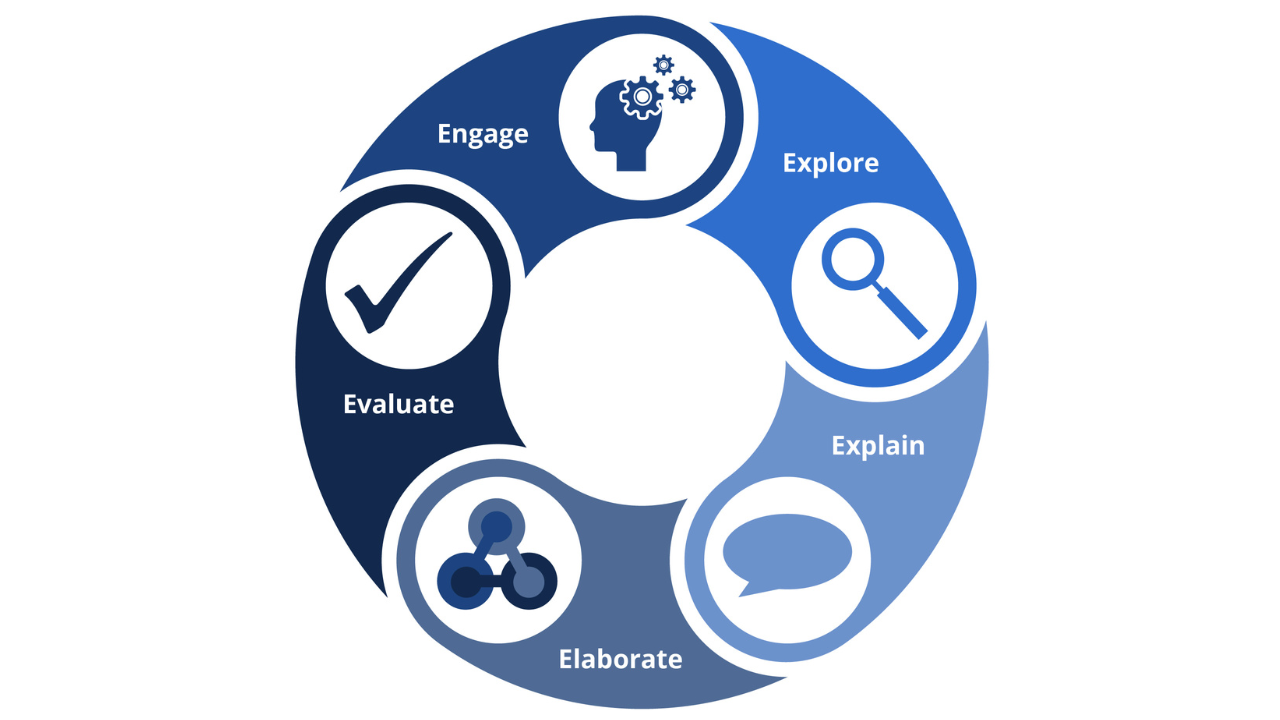The 5E Learning Cycle

The 5E's is an instructional model based on the constructivist approach to learning, which says that learners build or construct new ideas on top of their old ideas. In addition to instruction, it's also a framework to help make presentations more engaging and meaningful for audiences. The 5E's are applicable in all modalities: in-person, online, remote, hybrid, etc.
Each of the 5E's describes a phase of learning, and each phase begins with the letter "E": Engage, Explore, Explain, Elaborate, and Evaluate. The 5E's allows students and instructors to experience common activities, to use and build on prior knowledge and experience, to construct meaning, and to continually assess their understanding of a concept.
For example, a faculty member wrote about the importance of the first five minutes of class (visit here). What he described is the “Engage” part of the 5E model. Surprisingly, the 5E model is still not widely known and/or applied in education. Therefore, I gathered boxes in my garage and searched old files on my computer about the 5E's (I used to train educators on the 5E's at many institutions ten years ago via a federal grant), but then I came across a couple online resources with a simple and straight-to-the-point description of the 5E's by the nonprofit public media organization, WGBH, and by NASA.[1]
Here’s the 5E description thanks to WGBH and NASA.
ENGAGE: This phase of the 5E's starts the process. An "engage" activity should make connections between past and present learning experiences. Prepare activities that are highly engaging (e.g., think-pair-share, thought-provoking visuals, prepare manipulatives, use iClickers, etc.). Students should become mentally engaged in the concept, process, or skill to be learned.
EXPLORE: The purpose of this stage is to get students involved in the topic; providing them with a chance to build their own understanding.
Give students the opportunity to get directly involved with the topic, phenomena and materials. Grouping students is often helpful. As they work together in teams, students build a set of common experiences which prompts sharing and communicating. The instructor acts as a facilitator, providing materials and guiding the students' focus. The students' inquiry process drives the instruction during the exploration.
EXPLAIN: This phase helps students explain the concepts they have been exploring. They have opportunities to verbalize their conceptual understanding or to demonstrate new skills or behaviors. This phase also provides opportunities for instructors to introduce formal terms, definitions, and explanations for concepts, processes, skills, or behaviors.
ELABORATE: The purpose of this stage is to allow students to use their new knowledge and continue to explore its implications. Through new experiences, the learners develop deeper and broader understanding of major concepts, obtain more information about areas of interest, and refine their skills. Elaborate is the stage where instructors also help students apply their knowledge in other topics.
EVALUATE: The purpose of this stage is for both students and instructors to determine how much learning and understanding has taken place. It's an on-going diagnostic process that allows the instructor to determine if the learner has attained understanding of concepts and knowledge. Evaluation and assessment can occur at all points along the continuum of the instructional process. Some of the tools that assist in this diagnostic process are: rubrics, instructor observation, student interviews, portfolios, project and problem-based learning products.
The constructivist educator sets up problems and monitors student exploration, guides student inquiry, and promotes new patterns of thinking. Working mostly with raw data, primary sources, and interactive material, constructivist teaching asks students to work with their own data and learn to direct their own explorations. Ultimately, students begin to think of learning as accumulated, evolving knowledge.
I hope this serves as an informative reminder to consider implementing the 5E Model. Download the 5E instructional plan template.
***
Also visit: Teaching & Learning Podcast Episodes | Teaching & Learning Blog Posts
[1] Direct quotes used throughout.






